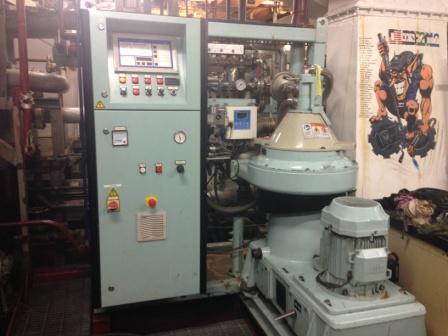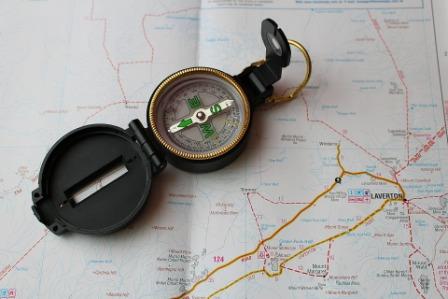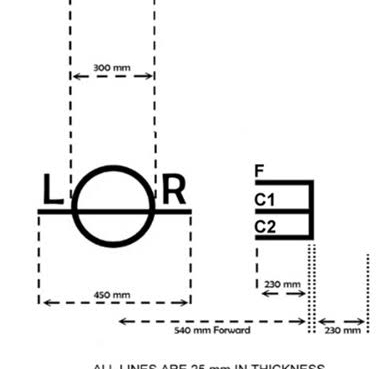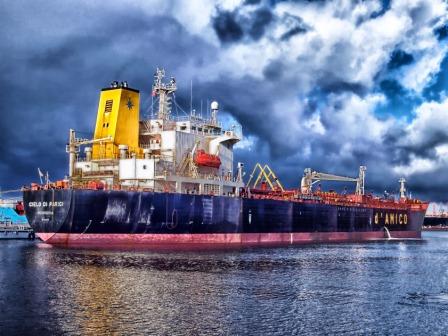An oily water separator (OWS) is equipment specific to the shipping industry. It is used to separate oil and water mixtures into their separate components.
Oily water separator and oil content monitoring system on a cargo ship. The unit consists of basically two chambers:
- Coarse separator unit
- filter unit.
Working:
1.the complete unit is first filled with clean seawater.
2.the oil mixture is then pumped through the inlet line into the coarse separator unit. The density of oil is less than water thus it will separate and rise into the oil collection space.
3.there is a probe fitted in this space, which senses the amount of oil in the space and will direct the solenoid of an automatic control release diaphragm valve to dump this oil into an oil storage tank.
4.the remaining oil/water mixture flows down into the fine separation compartment and moves slowly between the catch plates. More oil will separate out on the underside of these plates and travel outwards until it is free to rise into the oil collecting space.
5.air is released from this unit by a vent valve.
6.steam or electric heating coils are provided in the upper and sometimes in the lower parts of the separator, depending upon the type of oil to be separated. (heating reduces the viscous drag of oil and thus makes the separation of oil and water easier).
7.the almost oil-free oil now passes into a central pipe and leaves the separation unit. The purity at this point is about 100 ppm.
8.in the filter unit, the water flows through two filter stages.
9.the first stage filter removes physical impurities present and promotes some fine separation.
10.the second stage filter uses coalescer inserts to achieve fine separation. Coalescence is the breakdown of surface tension between oil droplets in an oil/water mixture which causes them to join and increase in size.
11.This separated oil is collected in collecting spaces and manually drained to the storage tank about once a week.
For ships built after 1st Jan 2005, an oily water separator must be capable of separating emulsified particles.
The water from o.w.s. is discharged in a floc tank, which is dosed with poly aluminum chloride. Emulsified particles stick to poly aluminum chloride forming flocs. Most flocs settle down. The water from floc tanks is passed through a set of filters where remaining flocs get filtered.
Factors affecting separation
1.temperature: the oily mixture is heated up by heating coils. Heating reduces the density of oil, the larger the difference in densities, the better the separation.
2.pumping rate: if the flow rate is high, separation is insufficient.
3.pressence of air bubbles due to dissolved air will make separation inefficient.
4.rolling / pitching will reduce the size of the oil globules. Larger the size, the better the separation.
How is the efficiency of o.w.s ensured
- Maintenance of plant as per the manufacturer’s instructions especially, renewing the filters and regular cleaning and inspection of internal parts.
- Regular checking of alarms in the system.
- Not allowing any leaks,
- Regular calibration of oil content meter by authorized shore workshop.
- The flow rate should be within the limits.
- Maintaining recommended temperatures.
- Preferably not operating during excessive rolling/pitching.
- During operation of o.w.s. the equipment should be constantly monitored by engineers.
Oil content meter
As per Marpol, the concentration of oil in the overboard discharge should not be more than 15ppm. For this purpose, an oil content meter is used which automatically measures these values, gives an alarm if it exceeded, and also keeps a continuous record.
The principle used behind this is ultra-violet fluorescence. This is the emission of light by a molecule that has absorbed light. During the short interval of absorption and emission, some energy is lost and light of a longer wavelength is emitted. This property is more in oil than in water, which provides the means for its detection.
A sample is drawn from the overboard discharge and passed through a sampling cell. Ultraviolet light is directed onto the sample and fluorescence is monitored with the help of a photoelectric cell. The measured value is compared with the desired maximum value in a controller/recorder. If the concentration is in excess of 15ppm, an alarm is sounded and the discharging liquid is diverted to the slop tank with the help of a 3-way valve.




